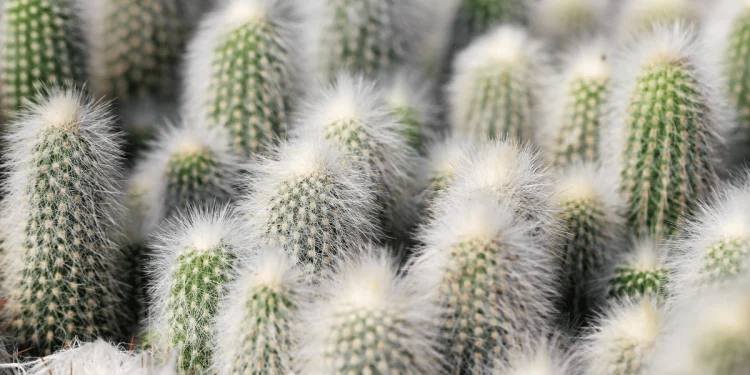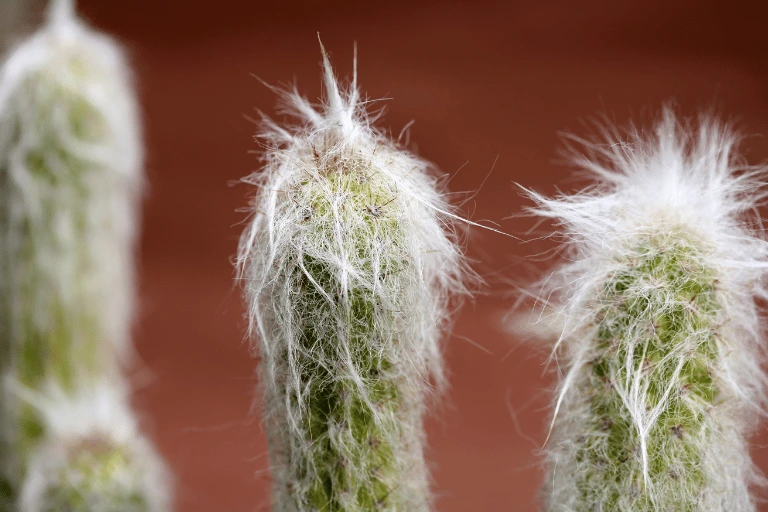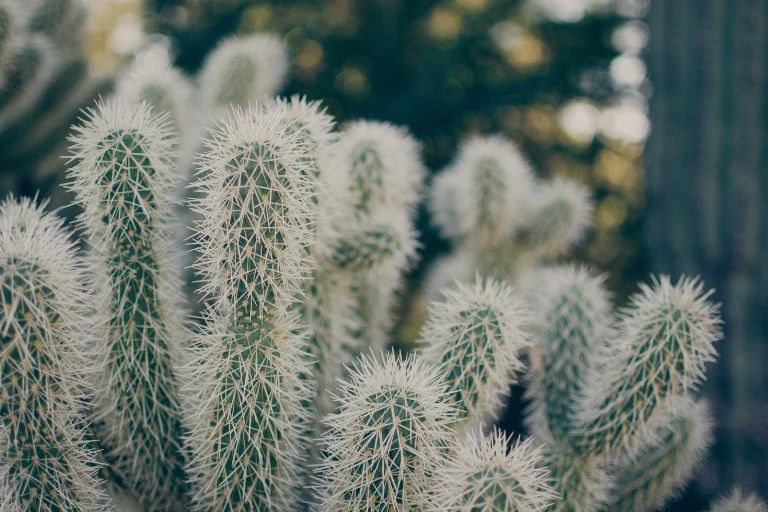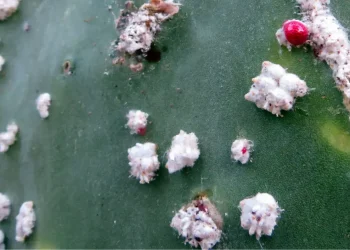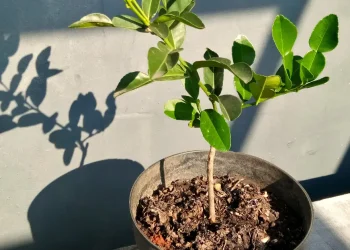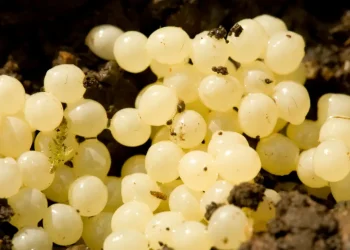As a gardener, there’s nothing more frustrating than seeing your beloved cacti turn into a fuzzy mess. One day, you’re admiring its sharp and prickly exterior, and the next, it’s covered in what looks like a thick layer of fur.
I bet the first thing that came to your mind after seeing your cactus all fluffy is if it’s sick. But fortunately, your cactus is probably perfectly healthy.
This phenomenon is known as “hairy cactus” or “woolly cactus,” and it’s usually another way of cacti protecting themselves against harsh sunbursts. Well, at least until it isn’t. It can also be a sign of a more serious problem, like a fungal infection or insect infestation.
In this article, I’ll cover why some cacti are covered in hair-like fluff and how to tell the difference between the good and the bad cactus hairs.
Why a Cactus has White Hair?
To start scientifically, the fine, white hairs that cover the surface of a cactus are known as trichomes. That’s just a fancy way to say that these are modified cacti spines.
As I covered in my article focused on how to trim a cactus without killing it, these cactus needles are technically dead leaves, and as such, they are not vital for the plant. But cacti create them as a protection against predators and environmental stress.
That’s also the reason why your cactus is growing fuzzy hair around its surface. These soft hairs help the cactus against extreme temperatures but also help the plant to conserve water by reducing evaporation from the surface.
So, while a hairy cactus might look strange, it’s probably native to the environment in which the cactus comes from.
However, there are also cases where it can be a sign of a more serious problem.
Fungal infections can cause a cactus to develop a thick layer of white hair on its surface. That is usually easy to distinguish, as a fungus will not be that fluffy. But what’s harder to distinguish is cactus hair caused by parasites. Parasites, such as mealybugs, will weave a fluffy white web that looks a lot similar to these hairs.
I had an infested cactus that is naturally hairy, and I couldn’t detect it until it manifested in the health of my plant.
Does a Hairy Cactus Need any Special Care?
If you’re the proud owner of a hairy cactus, you might be wondering if it requires any special care.
The good news is that, for the most part, these plants can be cared for in the same way as any other cacti, with or without spines. But there is one thing you need to keep in mind.
As was already said, cacti modified their spines into this white, fluffy hairs to protect their skin from high heat and freezing temperatures. So it impacts the plant’s ability to absorb sunlight and water. So it’s essential to ensure that your cactus is getting enough light and that it’s getting just enough water. These cacti usually love loads of direct sunlight.
In some cases, you may also want to gently wipe the hairs off the surface using a soft brush or cloth.
Most Common Types of Hairy Cacti
Every cacti lover will have at least one hairy in their collection. There are literally dozens of types you can choose from. I decided to select five particularly popular species you should really check out.
Old Man Cactus (Cephalocereus senilis)
The Old Man cactus is one of the most popular types of hairy cacti. Actually, many hairy cacti have the adjective “old man” in their name, so if you see one, you’ll know that it will grow hairs.
It got its name because its grayish, long, twisted hair resembles a beard of an old man. This species can also get very big, reaching up to 40 inches (1 meter) in height. If you are interested to see the biggest of biggest cacti, check out my article on how big can a succulent get.
Powder Puff Cactus (Mammillaria bocasana)
The Powder Puff Cactus lives up to its name, with a soft and fluffy appearance that’s hard not to touch. It is native to Mexico’s hot weather.
When you get one, it will bloom every summer a delicate pink flower that creates beautiful contrast on top of the white fluff.
Old Man of the Andes (Oreocereus celsianus)
Another old man that grows thick white hair. The Old Man of the Andres is a tall cactus that can grow up to 10 feet (3 meters) in height.
It is native in higher altitudes where the white hairs protect it from intense UV light and harsh weather.
Teddy Bear Cholla (Cylindropuntia bigelovii)
I would rather not cuddle this teddy bear. It is named for its wooly, curved arms that resemble those of a teddy bear, but it’s covered in a dense cluster of barbed spines.
When it matures, it looks like a tree, both 3-8 feet (1 to 2.5 meters) tall and wide.
Cleistocactus Strausii
The Cleistocactus Strausii is a cactus that demands attention with its tall, columnar shape and dense cover of fuzzy spines. I especially like the vibrant flowers that grow in the summer months on its sides.
Frequently Asked Questions
No, cactus hair is not real hair. It’s a term used to describe the fuzzy, white fluff growing on certain types of cacti. The “hairs” are just modified spines that serve various purposes, especially protect the plant from harsh weather.
It’s generally not recommended to touch the hair of a cactus. That’s because while it might look very inviting, the hair covers the sharp spines of the cactus, which can cause injury. If you must handle a cactus, wear thick gloves and be careful not to get pricked.
The hairs on a cactus are just spines that the cactus can recover if they are damaged or lost. However, the process of regrowth can take a long time, and the new spines may not look exactly like the old ones.
Bottom Line
There are not many differences between regular cactus and a hairy one. So a fluffy cactus can be a great addition to your home garden.
But the hairs carry one big advantage – the cactus is more tolerant of poor care, especially when it comes to weather conditions.

